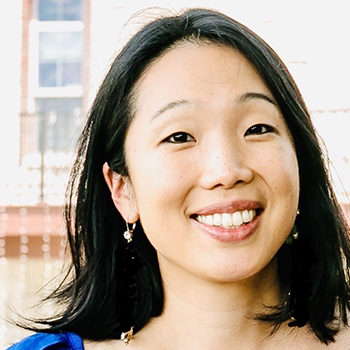This past spring, we were in Chinatown San Francisco visiting low-income Asian American Pacific Islander (AAPI) youth who live in 150 square foot tenements with their families, sharing bathrooms and a kitchen with a dozen families on the same floor. Their families are the unseen restaurant workers, delivery drivers, and street sweepers, whose average household income is $25,000. This is a community of about 500 predominantly AAPI families in a short block radius. Quarantining and remote schooling through the pandemic in a shoebox with your family is a herculean feat. Despite the need, we heard from many AAPI nonprofits serving the tenement and low-income youth that they are unable to access stable funding from foundations.![]()
Only 0.2 percent of foundation funding flows to Asian American Pacific Islander (AAPI) causes, and yet AAPIs comprise 7 percent of the nation, with poverty levels ranging from 10-30 percent (range based on AAPI subgroups). AAPIs are the fastest growing group in the nation and their rates of poverty have also been increasing.
A common refrain we hear as an AAPI foundation is that the de minimus funding and attention on AAPI nonprofits is due to a perception of no need. Yet as the recent CEP report Overlooked (Part 1): Foundation Support for Asian American and Pacific Islander Leaders and Communities highlights, AAPI nonprofit leaders are disproportionately under-funded and disconnected from foundations, even when they are affected by systemic inequities.
Why are AAPI needs overlooked? Perhaps it is due to harmful myths, paucity of disaggregated data, and the lack of awareness of the long history of anti-Asian racism. In the U.S., AAPIs have the largest within group income inequality — the top 10 percent of AAPI earners had 11 times the earnings of the bottom 10 percent. This obscures AAPIs living in or on the brink of poverty. Hmong, Bangladeshi, Tongan, and Cambodian communities have poverty levels of 20-30 percent. One of the largest concentrations of Tongan and Samoan (Pacific Islander) communities shares the same zip codes as Silicon Valley tech giants. I encourage you to read Grace Chiang Nicolette’s article, It’s Time for Philanthropy to Address Its Erasure of AAPI Voices and Perspectives, to learn more.
We were surprised to learn that our number one grantee need was a tie between raising awareness for AAPI needs and multi-year, flexible funding. The anonymous grantee survey shared anecdotes about the uphill climb of having to explain AAPI poverty and community needs, and the juggle of serving the community while raising awareness.![]() One response mused “It’s either not knowing the need or not caring.” Based on the feedback and our desire to be grantee-centric, we have been centering AAPI and cross-racial youth stories in our platform and advocacy. The finding underscores how much the AAPI nonprofit community feels equally unheard, unseen, and under-funded.
One response mused “It’s either not knowing the need or not caring.” Based on the feedback and our desire to be grantee-centric, we have been centering AAPI and cross-racial youth stories in our platform and advocacy. The finding underscores how much the AAPI nonprofit community feels equally unheard, unseen, and under-funded.
Despite these hurdles in awareness and funding, AAPI-serving and AAPI-led nonprofits continue to find solutions for the marginalized. The Chinatown tenement youth we met were at the neighboring Community Youth Center, where they could participate in in-person learning pods, eat a hot meal, and receive other comprehensive services. This was also the height of anti-AAPI violence against the elderly and vulnerable, and the nonprofit was participating in a cross-racial Street Violence Intervention walk.
We have also seen the great work done by Streetcode Academy, which serves Pacific Islander and cross-racial youth by bridging the digital (and racial) divide in Silicon Valley. We have been struck by how East Bay Asian Youth Center (EBAYC) staff engage in costly, messy grace, as they work with some youth who have committed anti-AAPI violence. EBAYC serves those for whom the model minority myth has obscured true need, providing intensive case management, life coaching, and work-based learning to young people impacted by violence, engaged in the juvenile justice system, and at high risk of not graduating high school. The youth served are approximately a third AAPI, a third Latino, and a third Black.
Since the start of the pandemic, there have been more than 10,000 incidents of anti-AAPI hate reported by Stop AAPI Hate. Our foundation founder, Jeremy Lin, and Board President Patricia Sun co-authored a Time article after the Atlanta shootings, showcasing how the AAPI nonprofits and community were grieving and mobilizing to support vulnerable victims already living at the margins. As AAPI hate incidents are being covered less in the news, it would be a mistake to believe the incidents have stopped or that these communities no longer have social, safety, and economic needs, which existed pre-pandemic.
Supporting Asian American nonprofits is part of the cross-racial work that lifts all of our communities.![]() We have learned that a focus on overlooked AAPI and cross-racial youth programs is an investment in root cause, long-term sustainable solutions. We fund cross-racial youth programs because we have seen the research that one positive friendship with a member of another race can color one’s view of an entire race for a lifetime. We partner, pool, and convene like-minded funders where we can and are grateful for the community of solidarity. We recognize how intertwined systemic inequities are and seek out grantees who are doing the hard work of bridging communities of color. Many hands make light work, and we seek to enlarge the pie for all underserved communities.
We have learned that a focus on overlooked AAPI and cross-racial youth programs is an investment in root cause, long-term sustainable solutions. We fund cross-racial youth programs because we have seen the research that one positive friendship with a member of another race can color one’s view of an entire race for a lifetime. We partner, pool, and convene like-minded funders where we can and are grateful for the community of solidarity. We recognize how intertwined systemic inequities are and seek out grantees who are doing the hard work of bridging communities of color. Many hands make light work, and we seek to enlarge the pie for all underserved communities.
No stranger to the underdog story given our Founder and Board Chair Jeremy Lin, and his own personal story of being undrafted and cut from multiple NBA teams before breaking out in “Linsanity,” Jeremy and the board are acutely aware of the power of opportunity. Yet, despite our familiarity with being overlooked and underestimated, we do scratch our heads as to why there is such a disconnect between AAPI communities’ needs and the level of support flowing from foundations.
Why has funding for impactful grassroots AAPI organizations not risen to meet the long standing and current need? Why are AAPI and Native American/Indigenous organizations rooted in community and addressing income and racial inequality in a long-term sustainable way trapped in a nonprofit starvation cycle?
With these CEP report recommendations and the anecdotes shared by AAPI nonprofit leaders, we can no longer say it is due to a lack of awareness. How can we all self-examine, partner, and work together to make sure AAPI communities are not overlooked but are supported?
Our collective goals of advancing equity and justice depend on it.
Stephanie Hsu is the executive director of the Jeremy Lin Foundation. Learn more at www.jeremylinfoundation.org or on Instagram.
Note: The nonprofits (EBAYC, CYC, Streetcode Academy, Stop AAPI Hate youth campaign) mentioned above are grantees of the Jeremy Lin Foundation.
Additional sources: 2019 California AAPI Worker Study (AAPI Data & PRRI), Foundation Funding for AAPI Communities (2021 AAPIP report & TAAF); AAPI Data Report on AAPI Poverty by Subgroups; National CAPACD AAPI Poverty; 2021 Pew Research Center AAPIs A Diverse and Growing Population; 2021 Act to Change AAPI Bullying report




